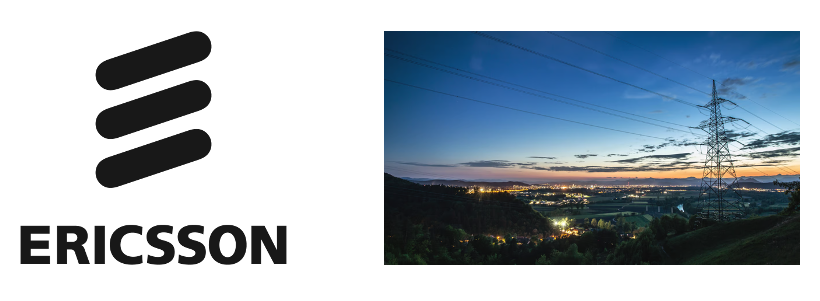Ericsson: Unlocking 5G technologies for mission-critical networks using narrowband spectrum
- Explore the use cases and deployment scenarios for mission-critical networks that require narrowband spectrum.
- Learn about recent advancements in 3GPP technologies that enable 5G for use in narrowband spectrum with channels less than 5 MHz.
Narrowband spectrum for mission-critical networks
Mission-critical networks (MCN) cover a variety of use cases crucial for government and key industry verticals, including public safety, defense, utilities, and rail. To some extent, these verticals require mission-critical voice, data, and video services. These are typically group-based communications, with far greater and more demanding service requirements than even the most advanced consumers or commercial enterprises. Often, these communications are used to save lives and prevent serious impacts to local and regional communities, and even sometimes national economies.
These verticals share similar deployment characteristics and design needs such as requiring mission-critical communications to address more demanding performance requirements such as high reliability, availability, resilience, and security using spectrum with narrow bandwidths.
Today, many of the MCN verticals are utilizing networks based on a plethora of wireless technologies such as analog, DMR, TETRA, P25, GSM-R (for Railways) and WiFi, however these are being superseded in a growing number of cases with 4G LTE technology developed under the 3rd Generation Partnership Project (3GPP), with that trend expected to continue for the foreseeable future. However, at some point, these networks are likely to require a future upgrade path to 5G, either from LTE or from former technologies mentioned previously, with many of these needing to operate within narrowband spectrum.
It will provide an opportunity to add more bandwidth and spectrum together utilizing a new advanced air interface. The air interface of 5G, a.k.a. new radio (NR) provides great potential for achieving high performance such as high data rate, high reliability, and low latency in an efficient manner, both in terms of spectrum usage and energy consumption thereby offering sustainable support for any future use cases. For example, utilities use cases requiring time-sensitive communications such as control of power substation equipment for teleprotection can benefit from superior 5G low latency performance, while those involving seamless and robust data/video transmissions over a large coverage area to many users simultaneously for public safety and rail can benefit from advanced multi-antenna solutions such as beamforming and multiple transmission and reception point schemes.
Spectrum is the basis of wireless connectivity. It refers to radio frequencies which the wireless signals travel over. The spectrum is divided into separate bands. The bandwidth of a spectrum band is the difference between the upper and lower frequencies in a continuous band of frequencies. The properties and availability of the spectrum bands typically vary depending on the geographical region and range of the radio frequencies. For example, from a spectrum property perspective, a spectrum in the low-frequency range [for example, below 1 GHz with Frequency-division duplexing or FDD] offers broad coverage which is important for wide-area deployment but usually has limited availability and capacity. On the other hand, in the mid to high-frequency range, the coverage is more limited but there are more spectrum bands with larger bandwidths available, making it suitable for providing high data rates in a limited coverage area. Since many of the MCN use cases involve wide coverage areas, the low band spectrum is a key spectrum asset for MCN deployments.
Spectrum dedicated to particular purposes plays a key role in ensuring that the demanding performance requirements of MCN can be met. Despite substantial attempts to increase spectrum availability, the current situation for MCN spectrum in most countries remains constrained. For example, some of the currently assigned dedicated FDD spectrum in low-frequency bands (in the 400-900 MHz range) for MCN use cases in the US and Europe are extremely limited (See Figure 1). In several bands, the amount of available spectrum is even less than 5 MHz, posing a significant challenge to adopting 5G technology for MCN.
Figure 1: Example of spectrum situations in the low band for some MCN use cases. *
Support of 5G NR with spectrum less than 5 MHz
Unlike LTE which supports small channel bandwidth (BW) down to 1.4 MHz from the beginning, 5G NR was designed with a relatively large spectrum in mind (up to 100 MHz BW in the frequency range 1, i.e., below 6 GHz range) and only supports minimum channel BW of 5 MHz. This fundamental design aspect prevents adopting 5G NR directly in the narrow spectrum of less than 5 MHz which is common among several MCN use cases as outlined earlier.
Motivated by the need to provide a future upgrade path for MCN, 3GPP in Release 18, as part of the 5G-advanced technology, introduced a work item to support NR in a new smaller channel BW, providing solutions to enable 5G operation in dedicated spectrum with less than 5 MHz in frequency range 11. 5G physical channels and signals were originally designed to operate with larger channels BWs, thus some existing physical channel and signal structures deployed during initial access which would occupy broad bandwidth were modified in Release 18 to fit within the available transmission BW. In the following, we outline some of the key changes.
- New channel BW of 3 MHz
A new channel BW of 3 MHz was introduced with a maximum number of usable resource blocks (RB) of 15 RBs and corresponding radio frequency (RF) requirements2,3 aligning with those of the 3 MHz channel BW in LTE. To prepare for potential gradual migration for FRMCS, further transmission restrictions up to 12 and 20 RBs within 3 and 5 MHz channel BW were also supported for FRMCS in band n100 without any new specific RF requirements. - New synchronization raster
Synchronization raster in NR represents frequency locations where a device is expected to receive a synchronization signal block (SSB) during the initial cell search. The existing NR synchronization raster was designed for the minimum channel BW of 5 MHz. For 3 MHz channel BW, a new dedicated synchronization raster for the 3 MHz channel BW was introduced2,3 with approximately two times denser granularity, providing sufficient deployment flexibility in the narrow spectrum deployment. There exist also two special synchronization raster points for FRMCS in band n100, dedicated to 12 and 20 RBs available transmission BWs in 3 and 5 MHz channel BWs. - Physical layer structure changes
From a physical layer perspective, existing signal and channel designs that spans more than 3 MHz in the frequency domain require adjustments. For example, to fit SSB within 3 MHz channel BW, its legacy 20-RB structure is punctured by 4 RBs from the upper and lower ends, resulting in the 12-RB punctured SSB. Similarly, changes were also made to the downlink control resources used primarily during initial access (CORESET#0) to fit within the available transmission BWs4,5.
The diagram in Figure 2 shows the changes and additions to the existing legacy 5G NR system as well as the applicability of configuration options intended for different verticals. Figure 3 further illustrates details of the specified technical solutions outlined above for the new 3 MHz channel BW, new synchronization raster, and SSB puncturing.
Figure 2 New changes to 5G NR Release 18 to support operation in narrowband spectrum of size less than 5 MHz.
Figure 3 Changes in NR Rel-18 to support spectrum less than 5 MHz including among other things new 3 MHz channel BW, new synchronization raster, and SSB puncturing.
The 3GPP Release 18 helps unlock 5G NR operation in a narrowband spectrum with channels smaller than 5 MHz. The 5G NR was originally designed for relatively large spectrum bands, with a minimum channel bandwidth of 5 MHz supported, whereas 4G LTE supports smaller bandwidths down to 1.4 MHz. With the enhancements to 5G NR to also support a smaller channel bandwidth of 3 MHz, the existing narrowband solutions currently building on technology from previous generations can now be transitioned into 5G together with new 5G narrowband solutions. This is a key step to secure 5G as a promising upgrade path for MCN verticals who are currently using LTE or legacy narrowband technologies for their connectivity solutions. With the new 5G narrowband spectrum, broadband can still provide peak data rates of up to 30 Mbps which is sufficient for a broad range of MCN use cases with a focus on geographical coverage. Looking ahead, further standard enhancements in this direction can also be envisioned which will potentially expand addressable use cases and achieve even better efficiency and superior performance.
Ericsson, through its technology leadership in 3GPP, provides innovative mission-critical mobile broadband network solutions to service providers either by leveraging their existing infrastructure assets or offering scalable and tailor-made solutions from deployable networks through to nationwide networks. These solutions enable service providers to deliver secure, resilient, and high-performance mobile communications to public safety, defense, rail, and utility organizations.
The authors would like to thank esteemed colleagues who are part of the work and contributed to this blog post: Keerthi Kumar Nagalapur, Mirza Uzair Baig, Venkatarao Gonuguntla, Kazuyoshi Uesaka, Nicholas Pu, Magnus Larsson, Bastian Cellarius-Toups, Joakim Åkesson, David Rothbaum, Christian Kuhlins.
*Note: Additional low band spectrum is used in MCN use cases beyond that referred to in this diagram, such as 410-430 MHz (Band 87/88) and 700 MHz (Band 68) that currently support LTE only. However, industry discussions are ongoing to potentially make these bands upgradable to 5G NR.
Ericsson is a member of the 450 MHz Alliance.

